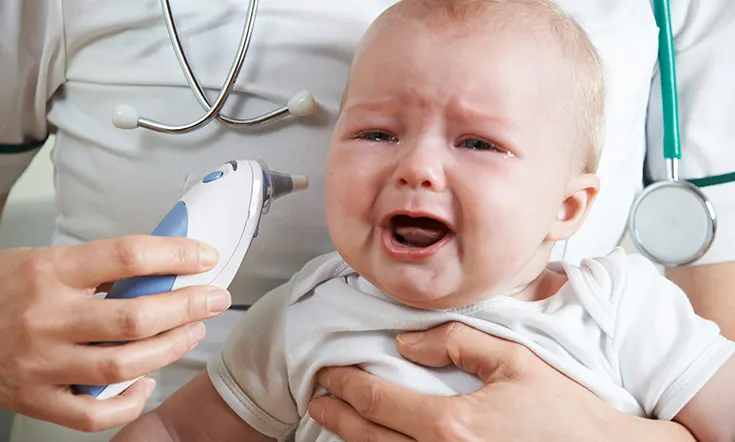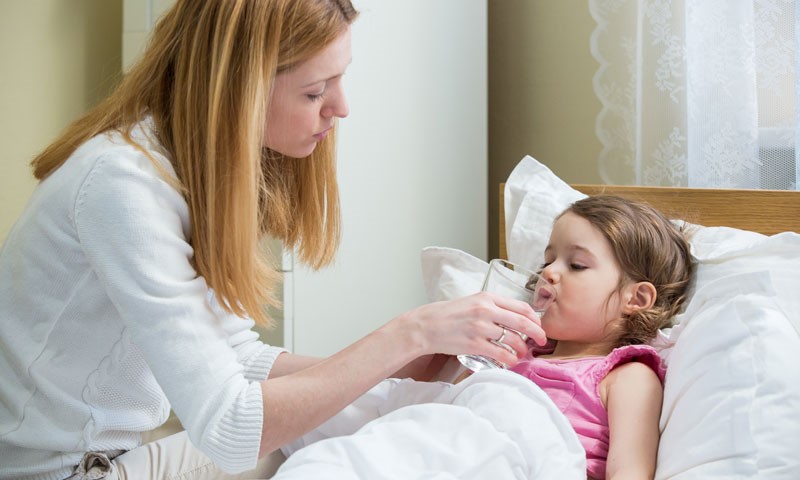One of the scariest attacks to observe is to watch your child starting to have abnormal movements all over his body that can’t be stopped by any means. Febrile Convulsion affects children between the age of 6 months to the age of 5 years. The triggering factor is having a fever of more than 38 degrees Celsius. 2 to 4 percent of children under the age of five get febrile seizures. Although they can be frightening to witness, they do not harm the brain or impair IQ. A child does not always have epilepsy just because they experience a febrile seizure; epilepsy is defined as experiencing two or more seizures without a fever.
Why does it happen?
Fever that follows bacterial or viral infections, particularly human herpesvirus-6, can result in febrile seizures (also called roseola or sixth disease). Also, a side effect of several immunizations, particularly the measles, mumps, and rubella (MMR) shot, can include fever. Usually, the fever starts 8 to 14 days following the injection. A child is more likely to get febrile seizures if they have a family history.
What are the clinical features?
The first day of illness is when febrile seizures typically happen. Occasionally, the seizure is the first indication that the child is ill, usually when the temperature is higher than 39C.
The most frequent febrile seizures are simple ones. The child typically experiences a convulsion or rhythmic twitching of the limbs or legs before losing consciousness. However, they can last up to 15 minutes, and most seizures last little more than one to two minutes. The child may feel disoriented or tired after the episode, but their arms or legs are not weak.
Complex febrile seizures are less frequent and can last up to 30 minutes (or 60 minutes if they occur in succession). Following the seizure, the child could have momentary weakness in an arm or leg.
What to do if this happens to your child?
When your kid experiences a febrile seizure, you should take several precautions to stop the child from hurting himself.
- Do not attempt to stop the child’s movement or spasms; instead, turn them onto their side. Nothing should be placed in the child’s mouth.
- Watch the time. More than five-minute seizures need to be treated right away. While another parent calls for emergency medical aid, which is available by dialing 998, one parent should stay with the child.
Parents of children susceptible to recurrent febrile seizures can be trained to treat longer-than-five-minute seizures at home. The standard course of treatment entails injecting one dosage of diazepam gel into the rectum. Most of the time, one dose is sufficient to end a seizure.
Can this happen again?
Children who experience one febrile seizure are at risk of experiencing another; this happens in about 30 to 35 percent of cases. Recurrent febrile seizures don’t always occur when the child has a fever and don’t always happen at the same temperature as the initial episode.
After the initial seizure, most recurrences occur within a year, and nearly all occur within two years.
Risk factors include:
- Young age(less than 15 months).
- Have frequent fever episodes.
- Had a parent or sibling who had febrile seizures or epilepsy.
- Had a brief interval between the beginning of the fever and the seizure.
- Had a low-grade fever before their seizure.
An insight from mamahood
Fever is the body’s reaction to regulate temperature, and there is nothing to be afraid of. It will not harm the child’s brain even if it causes febrile seizure, as it is also considered benign.








